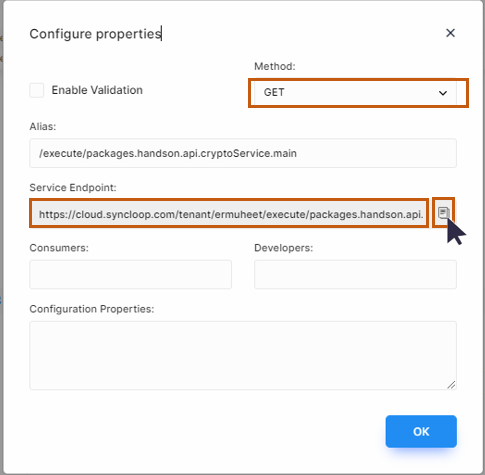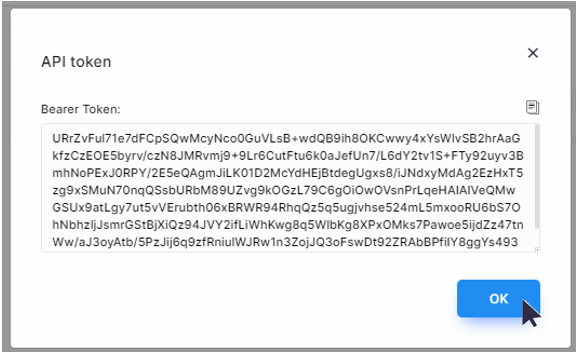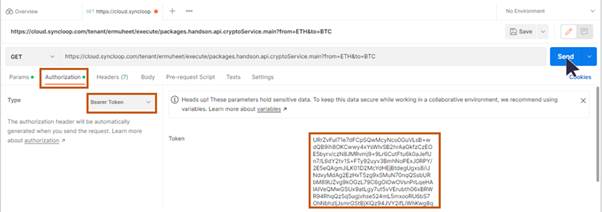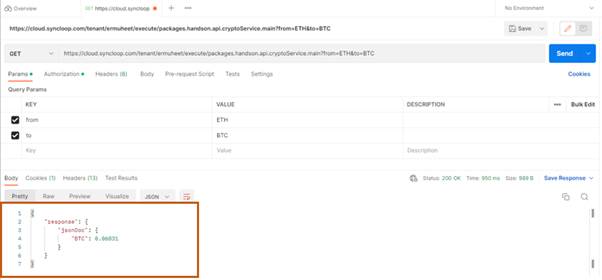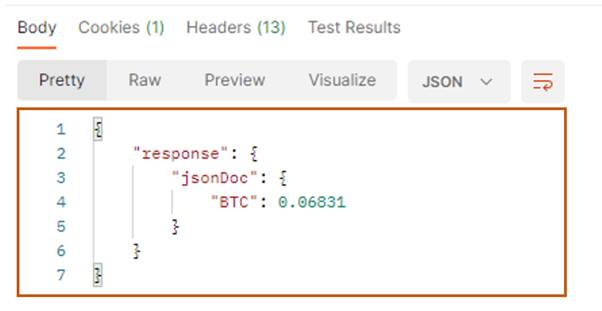Specification details available for packages and services
Service: request
This service works as a http client and can call to any types of http calls.
Input Parameters:
| Name | Type | Description |
| url: | String | Provides the HTTP url of service |
| method: | String | Provides the HTTP method of the calling service |
| payload: | String | Provides the request payload. |
| uri_parameters: | Document | Provides the Query parameter |
| auth: | Document | |
| basic: | String | Provides basic authentication token |
| awsSignature: | String | Provides AWS authentication token |
| formData: | Document | Provides form data for the request |
| respHandling: | ||
| content-type: | ||
| enableStreaming: | ||
| binaryData: | Document | Provides content in the form of binary |
| bytes: | byte array | Provides content in byte array. |
| inputStream: | Object | Provides content in the input stream. |
Output Parameter:
| Name | Type | Description |
| respHeaders: | Document | Header of the response |
| respPayload: | String | Payload of the response |
| error: | String | Error message |
| bytes: | byte array | response contents in bytes |
| inputStream: | Object | response contents as input stream |
| statusCode: | String | status code of the request |
Service: commitTransaction
This service will commit the transactions upto current step
Input Parameter:
| Name | Type | Description |
| txConn: | Object | transaction object obtained when startCommit service. |
Service: rollbackTransaction
This service will rollback the uncommitted transaction.
Input Parameter:
| Name | Type | Description |
| txConn: | Object | transaction object obtained when startCommit service. |
Service: startTransaction
This service will start the transaction for a particular connection.
Input Parameter:
| Name | Type | Description |
| jdbcConnection: | String | Provide the name of jdbcConnection |
Output Parameter:
| Name | Type | Description |
| txConn: | Object | Return txConnection object |
Service: addDoc
This service will add a document/List of documents into a Document List.
Input Parameter:
| Name | Type | Description |
| docList: | Document Array | Tracking field in which all input objects to be added and this object will receive in output |
| addDoc: | Document | Provides single document object to add |
| addDocList: | Document Array | Provides array object documents to add |
Output Parameter:
| Name | Type | Description |
| docList: | Document Array | Output Array |
Service: deleteDocFromList
This service will add a document from a Document List.
Input Parameter:
| Name | Type | Description |
| docList: | Document Array | the list from which the item to be remove |
| deleteDoc: | Document | deleting object |
Output Parameter:
| Name | Type | Description |
| txConn: | Object | Return txConnection object |
Service: listSize
This service will return an input document list size.
Input Parameter:
| Name | Type | Description |
| size: | Document Array | Object whose size to evaluate |
Service: bytesToFile
This service will write bytes into a file on the server location and return a size in bytes of the produced file.
Input Parameter:
| Name | Type | Description |
| filePathWithName: | String | path & file name of file on server machine |
| bytes: | byte array | content of the files |
| append: | boolean | append content in the file |
Output Parameter:
| Name | Type | Description |
| size: | integer | size of the file in bytes |
Service: fileToBytes
This service will read the file on server location and return into bytes.
Input Parameter:
| Name | Type | Description |
| filePathWithName: | String | path & filename of file on server machine |
Output Parameter:
| Name | Type | Description |
| bytes: | byte array | content of the files |
Service: flushAndCloseBW
This service will flush & close a file stream connection.
Input Parameter:
| Name | Type | Description |
| bufferedWriter: | object | Buffered writer object of the file |
Service: getBufferedReader
This service will return a buffered reader for a file on server location.
Input Parameter:
| Name | Type | Description |
| filePathWithName: | String | path & filename of file on server machine |
Output Parameter:
| Name | Type | Description |
| bufferedReader: | Object | Buffered Reader object of the file on server machine. |
Service: getBufferedWriter
This service will return a buffered writer for a file on server location.
Input Parameter:
| Name | Type | Description |
| filePathWithName: | String | path & filename of file on server machine |
Output Parameter:
| Name | Type | Description |
| bufferedWriter: | Object | Buffered Writer object of the file on server machine. |
Service: listFiles
This service will return a list of files and directory in a directory on server location.
Input Parameter:
| Name | Type | Description |
| dirPath: | String | path of folder on server machine |
Output Parameter:
| Name | Type | Description |
| list: | String Array | List of files and folders. |
Service: readLines
This service will return a specific number of lines from a file on server location.
Input Parameter:
| Name | Type | Description |
| bufferedReader: | Object | Buffered Reader object of the file on server machine |
| number: | integer | number of lines to be read |
Output Parameter:
| Name | Type | Description |
| lines: | String Array | read lines from the file |
Service: stringToFile
This service will write string into a file on server location.
Input Parameter:
| Name | Type | Description |
| filePathWithName: | String | path & file name of file on server machine |
| string: | String | file content in the form of text |
| append: | boolean | append content in the file |
Output Parameter:
| Name | Type | Description |
| size: | integer | size of the file in bytes |
Service: verifyPath
This service will check whether a path exists or not on the server.
Input Parameter:
| Name | Type | Description |
| absolutePath: | String | path of file or folder on server machine |
Output Parameter:
| Name | Type | Description |
| exists: | boolean | Return status of file if it exists |
Service: writeLines
This service will write specific lines in a buffered writer.
Input Parameter:
| Name | Type | Description |
| bufferedWriter: | Object | Buffered Writer object of the file on server |
| lines: | String Array | number of lines write in the file |
Service: fromJson
This service will convert json string to the object.
Input Parameter:
| Name | Type | Description |
| jsonString: | String | Json in string |
Output Parameter:
| Name | Type | Description |
| output: | Document | Json Object |
Service: fromJsonList
This service will convert json string to the object. If you have multiple json objects which are in separate lines so it will convert json to object and return an array of objects.
Input Parameter:
| Name | Type | Description |
| lines: | String Array | Json in lines as array |
Output Parameter:
| Name | Type | Description |
| root: | Document Array | Array Json object |
Service: toJson
This service will convert the object to json in the form of string.
Input Parameter:
| Name | Type | Description |
| root: | Document | Json Object |
Output Parameter:
| Name | Type | Description |
| jsonString: | String | Json in String format |
Service: toJsonSchema
Input Parameter:
| Name | Type | Description |
| *payload: | ||
| isArray: |
Output Parameter:
| Name | Type | Description |
| jsonSchema: | ||
| @multiPart: | ||
| error: |
Service: trim
This service trimmed the string and returned it.
Input Parameter:
| Name | Type | Description |
| trim: | document | send string data in as key-value document |
Output Parameter:
| Name | Type | Description |
| trim: | document | return same trimmed object |
Service: escapeSQL
Escapes special characters in a string for use in an SQL statement.
Input Parameter:
| Name | Type | Description |
| input: | String | Data |
Output Parameter:
| Name | Type | Description |
| Output : | String | Data escapes special characters |
Service: returnFile
This service will return binary content as response.
Input Parameter:
| Name | Type | Description |
| fileData: | byte array | file content as byte array |
| fileName: | String | file location on server machine |
| inputStream: | object | InputStream of file |
| body: | String | file content as String |
Output Parameter:
| Name | Type | Description |
| *multiPart: | object | internal object as file output. |
Service: getMultipart
This service will internally a multipart request and return the data.
Input Parameter:
| Name | Type | Description |
| fileData: | byte array | file content as byte array |
| fileName: | String | file location on server machine |
| inputStream: | object | InputStream of file |
| body: | String | file content as String |
Output Parameter:
| Name | Type | Description |
| *multiPart: | object | internal object as file output. |
Service: getLastErrorDump
This service will internally catch the exception and return in the form of a JSON object.
Input Parameter:
| Name | Type | Description |
| lastErrorDump: | Document | Error Stack Trace. |
Service: execute
This service will execute a service programmatically.
Input Parameter:
| Name | Type | Description |
| fqn: | String | service FQN |
Output Parameter:
| Name | Type | Description |
| lastErrorDump: | Document | Error from the service |
Service: debugLog
This service will print input data on the server log file.
Input Parameter:
| Name | Type | Description |
| log: | String | Provide any string to debug. |
| msg: | String | Provide any string to debug. |
Service: endpoints
This service will return the list of services whose endpoints will be matched with keywords.
Input Parameter:
| Name | Type | Description |
| keywork: | String | Search parameter for endpoints. |
Output Parameter:
| Name | Type | Description |
| endpoints: | String Array | Array of endpoints with package name |
Service: exitRepeat
This service will exit the cursor from repeat.
Input Parameter:
| Name | Type | Description |
| msg: | String | Search parameter for endpoints. |
Service: sleep
This service will causes the currently executing thread to sleep for the specified number of milliseconds.
Input Parameter:
| Name | Type | Description |
| milli: | integer | sleep time in milliseconds. |
Service: throwException
This service will throw an exception forcefully.
Input Parameter:
| Name | Type | Description |
| error: | integer | Message for exception. |
Service: auditLogging
This is an internal service that will log the service execution into the database or any other logging platform like Splunk.
Input Parameter:
| Name | Type | Description |
| auditLog: | Document | Request execution parameters |
| correlationId: | String | correlationId |
| sessionId: | String | sessionId |
| dateTimeStmp: | String | request timestamp |
| duration: | String | duration of execution |
| error: | String | Error |
| fqn: | String | service FQN |
| request: | String | request |
| response: | String | response |
| nanoInstance: | String | execution start timestamp |
| stopRecursiveLogging: | String | stopRecursiveLogging |
Service: findReferences
This service will find all places where the input service is associated.
Input Parameter:
| Name | Type | Description |
| serviceFqn: | String | service FQN |
Output Parameter:
| Name | Type | Description |
| list: | Document Array | All references list |
Service: validateFlowPath
This service will validate whether input service exists or not
Input Parameter:
| Name | Type | Description |
| serviceFqn: | String | service FQN |
Output Parameter:
| Name | Type | Description |
| list: | Document Array | All references list |
Service: getCurrentDateTime
This Service will return the current date
* The current date comes based on the server's machine.
Input Parameter:
| Name | Type | Description |
| format: | String | Java date format pattern |
Output Parameter:
| Name | Type | Description |
| curDatetime: | Document Array | Formatted date. |
Service: fromXML
Convert XML data in string form to an object.
Input Parameter:
| Name | Type | Description |
| XML: | String | XML |
Output Parameter:
| Name | Type | Description |
| output: | Document | Object form of XML’s data. |
Syncloop API Development Platform Documentation
At Syncloop, dedicated developers, Architects, and Tech Leaders plan and create APIs on a start-up-friendly and enterprise-ready API development platform. The platform acts as a bridge between the vendor database and the visual experience interface. It provides a high-quality, fast, comprehensive API development, management & deployment platform to enable organizations to be more agile. Syncloop offers the following key features:
- Provide a visual experience-based development environment where APIs are efficiently built, integrated, deployed, and made go live in seconds.
- Reduce 65% of the time in API development, 80% in debugging, and 90% in API deployment and management as compared to its other counterparts.
- Work with API development objectives to bring the most value and the quickest return on investment by automating workflows from a single platform.
- Address various integration issues that are mostly the outcome of legacy system adaptation.
- Furnish a collaborative role for all stakeholders to work in the best no-code technical architecture.
- Improve team agility through continuous coaching, training, documentation, discussion, blogs, case studies, and use cases.
Syncloop comes in four editions
Syncloop Shared Cloud
Empowers you to create highly optimized, managed, and massively scalable APIs in minutes with limited features. It includes extra reliability, monitoring, caching, tracing, security, and deployment features.
Syncloop Dedicated Cloud
Empowers you to create highly optimized, managed, and massively scalable APIs minutes with unlimited features. It includes extra reliability, monitoring, caching, tracing, security, and deployment features. This is the most popular solution for small enterprise production.
Syncloop Enterprise Cloud
Builds on all the features of the API Development Platform while giving you an enterprise-ready solution - complete with key features like observability, security, and performance - deployable in minutes. It uses the Syncloop Cloud for Deployment.
Syncloop Enterprise On-Prem
Builds on all the features of the API Development Platform while giving you an enterprise-ready solution - complete with key features like observability, security, and performance - deployable in minutes. Syncloop container can be hosted on the private/on-premise cloud.
QUICK START SYNCLOOP
Visit www.syncloop.com and click the button link Start Building Your API

Go to the screen Login in with Syncloop and register or login with existing username and password or login with google credentials.
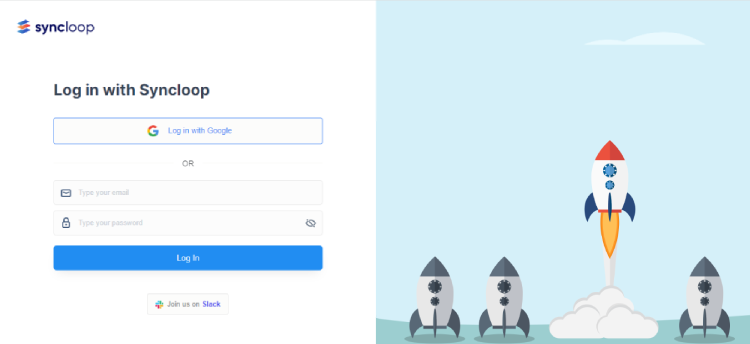
Once registered login into the workspace, and you will get this window. This window is called the Integrated Development Environment workspace wherein APIs are built, managed & migrated.
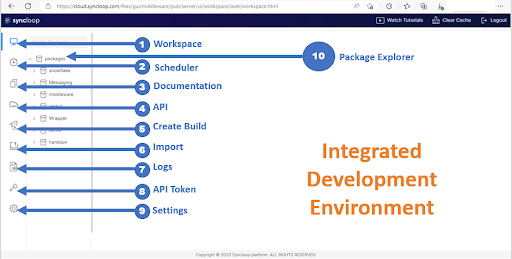
The various tools present in the workspace are shown in the figure above and their brief functions are discussed below
- Workspace
- Scheduler
- Documentation
- API
- Create Build
- Import
- API Token
- Settings
- Package Explorer
Get started for FREE
Create your APIs easily by saving up to 65% time on development.
Create your first web service/API “Hello World”
Right-click on Packages select New Package
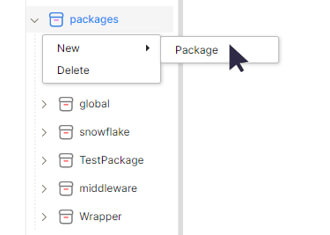
A create package window will be displayed
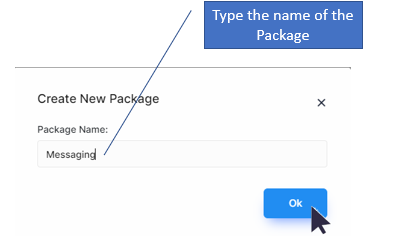
Type the name of the package as Messaging and click Ok button. A package named Messaging will be created successfully and will be visible in the package explorer window.
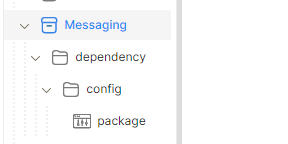
A dependency folder, a config folder and a default package will be created in the Package Explorer Window.
Right Click on Messaging Package and select New Folder
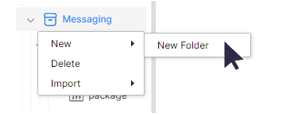
Type the name of the folder and click Ok button
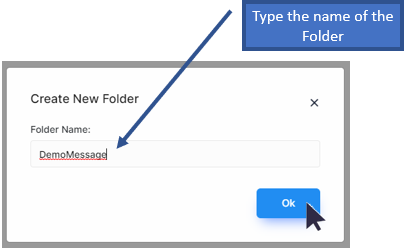
After clicking the folder, the folder DemoMessage will be visible as the child item of Package Messaging.
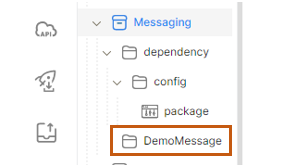
Right-click on DemoMessage click on New 🡪 New Folder and select Flow to create an API.
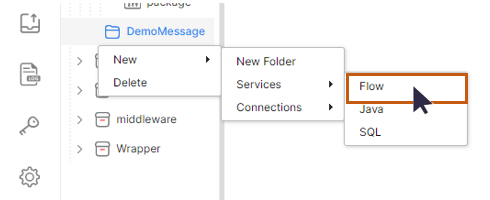
Type the name of the new Service Flow and click Ok Button
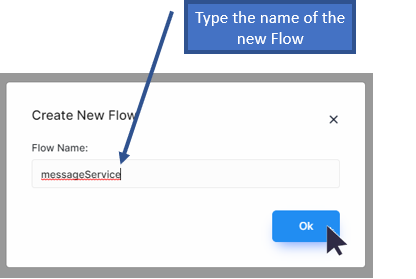
A new Service will be created under Messaging 🡪 DemoMessage package
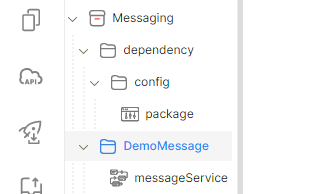
Double click on MessageService and this will open a Workspace Window on the right side of the environment. The works
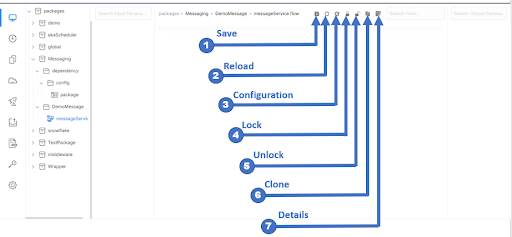
Click on the Save Button placed at the top in the workspace window to save the service. This should be done periodically so as the work remains saved.

The Service will be saved.
Right click on the Workspace window, a FLOW DESIGNER menu will appear. Select MAP from the menu.
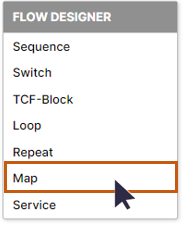
This will open a new window having input and output variable/parameter sections

The parameters will mostly be input and output which are responsible for getting the request from the client and providing the necessary response. These sections are used to create variables & Parameter and also to manipulate them.
Right click on the response section of Parameter Mapping, a OUTPUT SCHEMA will appear and select String in the context menu.
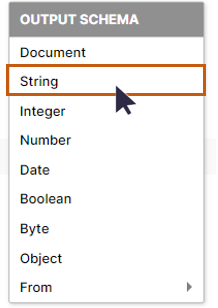
A string parameter will be created in the Response Section
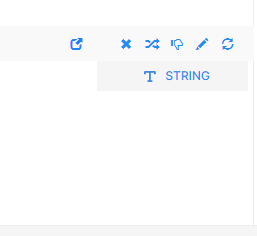
Right Click on the STRING parameter and rename it to strMessage
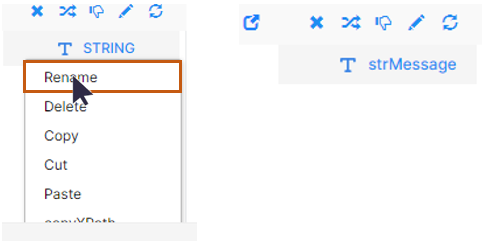
Click on the Pen tool
A Set window will appear. This window is used to assign value to the parameter strMessage. Once the window appears type Hello World...!! I in the text box and click Ok button.
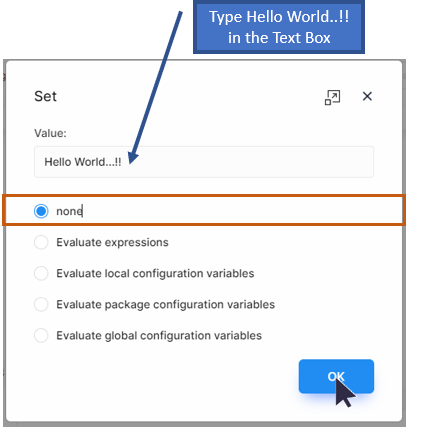
Right Click on the Output Parameter Section of the Workspace Window, Output Schema Menu will appear. Select String from the menu.
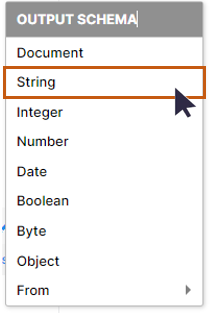
Create the similar parameter strMessage as String in the Output Parameter Section.
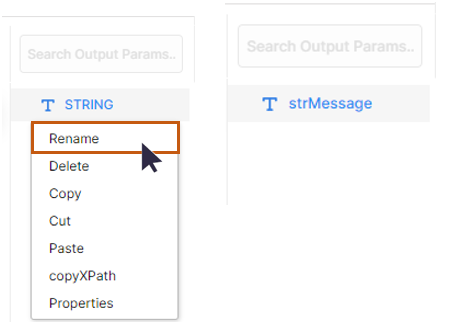
Click on the Save Button placed at the top in the workspace window to save the service. This should be done periodically so as the work remains saved.

The Save message box will appear confirming the save operation has been done successfully.
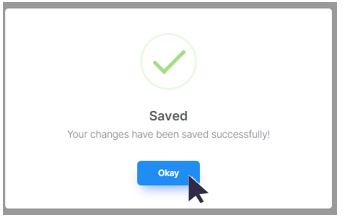
With this our first web service MessageService is created and now we need to test this service.
Any client tool can be used for testing. Here we are using Postman for testing.
Note: if you have not installed postman click on the link below and install it.
https://www.postman.com/downloads/
Once the post is installed click on the

Get the URL from the Syncloop platform by double clicking on MessageService and selecting configuration tool form Workspace Window. Copy the Service Endpoint path from the window by clicking on copy icon.
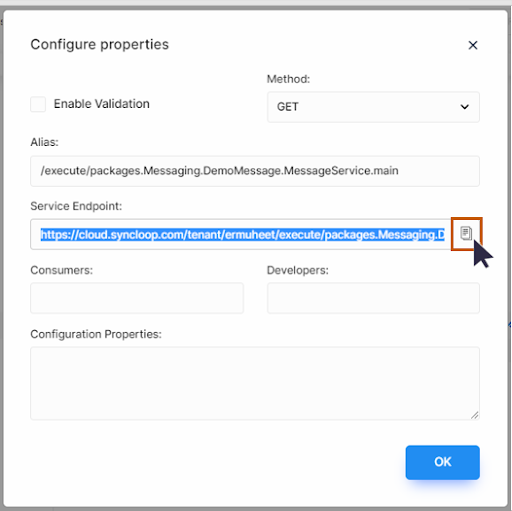
Paste the Service Endpoint link in the Request URL text box of the Postman API tester.
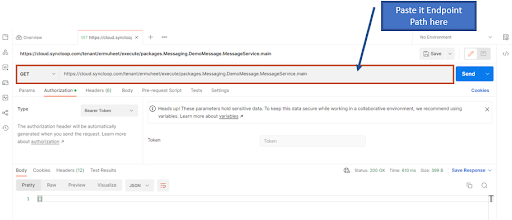
For authorization, select the Bearer Token option from the Authorization menu in the Postman API testing.
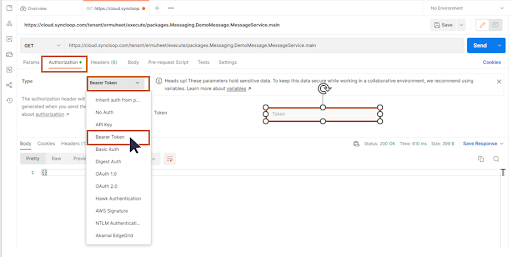
Copy the token text from API platform workspace by clicking on API token in the Syncloop IDE Tool Box.
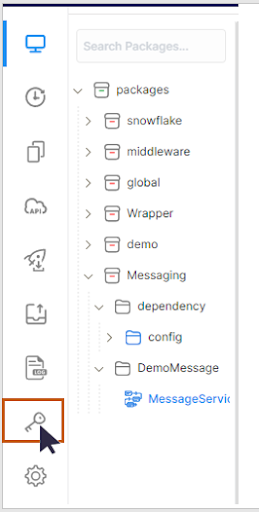
Copy the token text from the API Token window and click Ok button
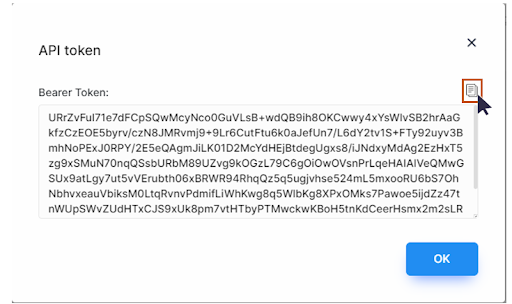
Paste the token value in the token text box of the Postman API tester.

Now click on  button and send the request to
the server. Visualize the output in the response section of the Postman API
tester.
button and send the request to
the server. Visualize the output in the response section of the Postman API
tester.
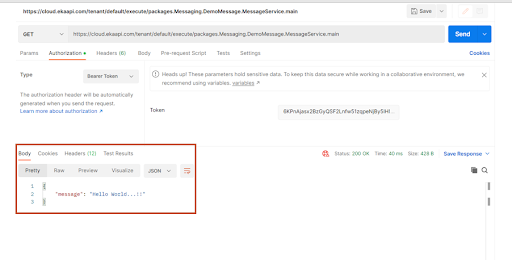
The output Hello World...!! is clearly visible in the response window. With this, you have successfully tested your first API on the Syncloop Platform.
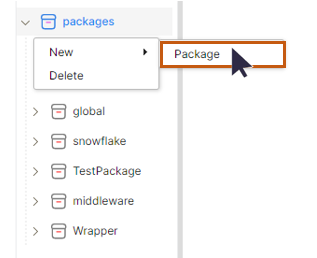
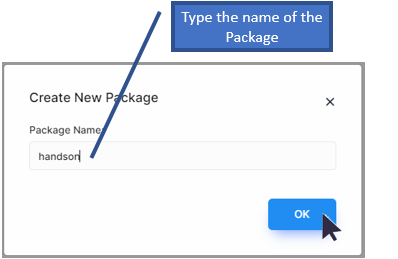
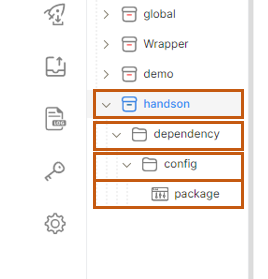
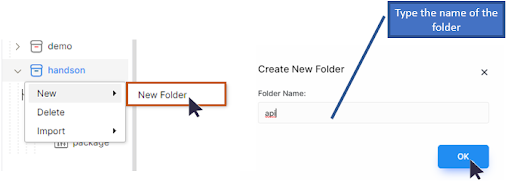
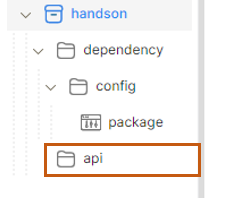
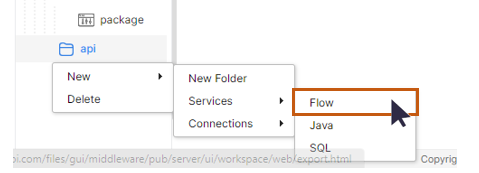

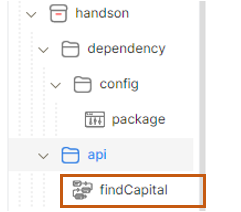
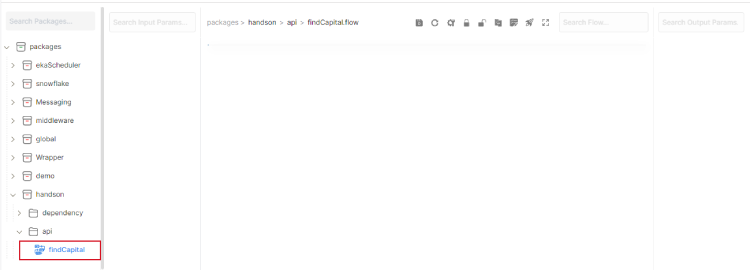

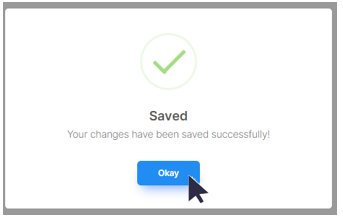
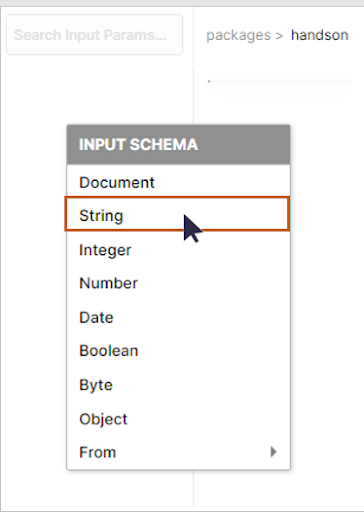
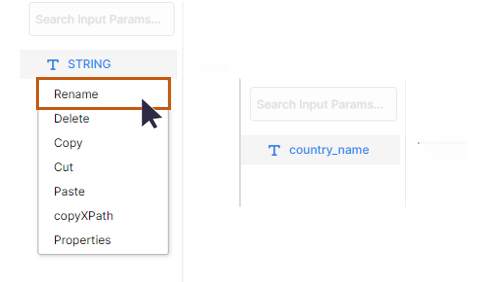
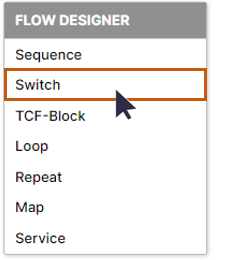

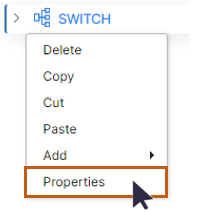

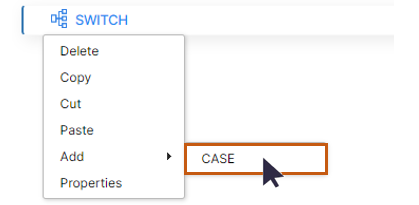


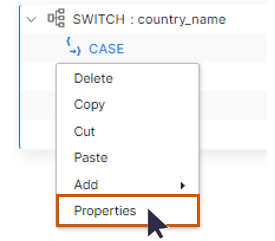
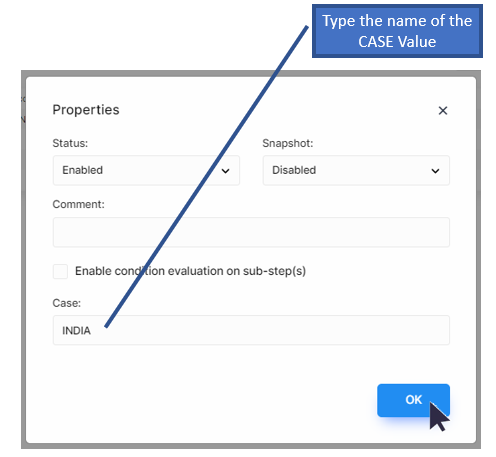
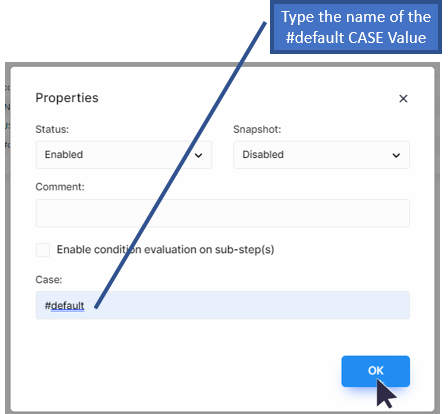
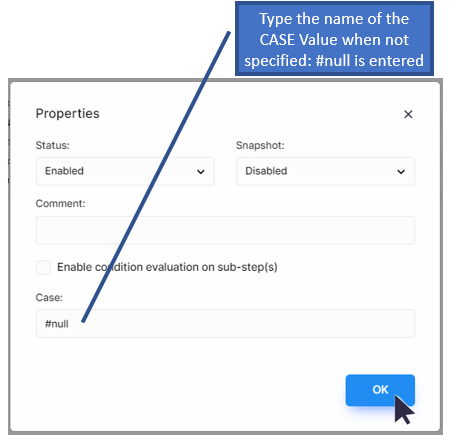

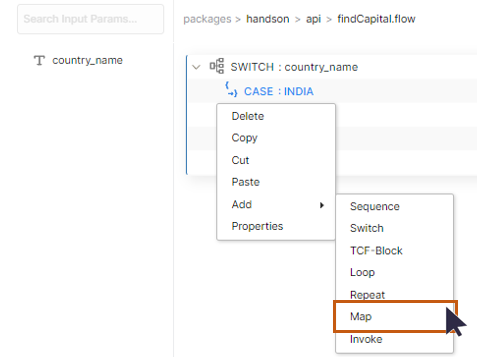
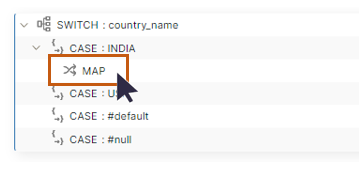
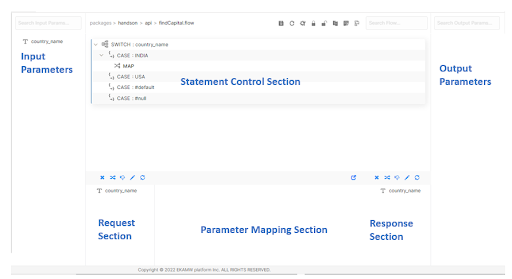
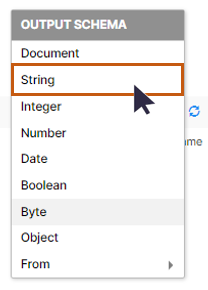
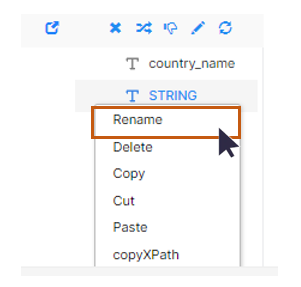
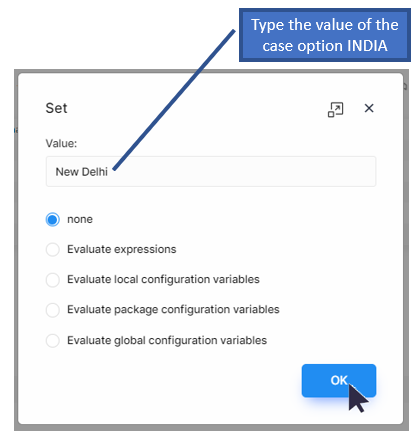
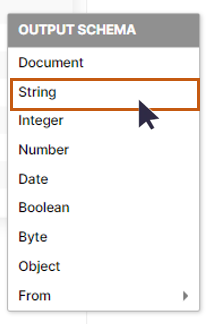

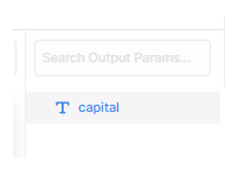
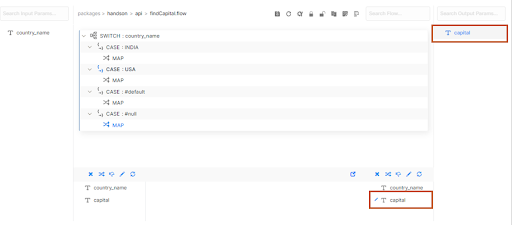

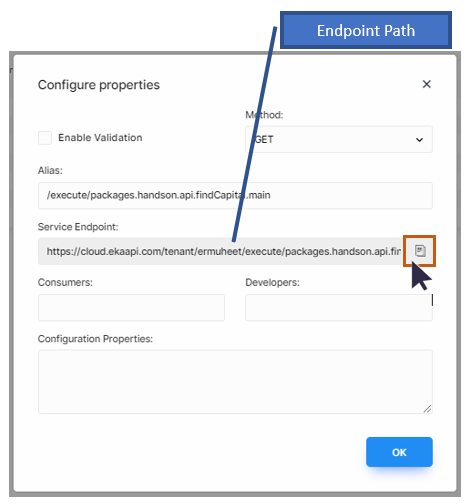

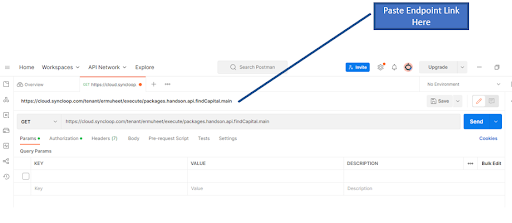
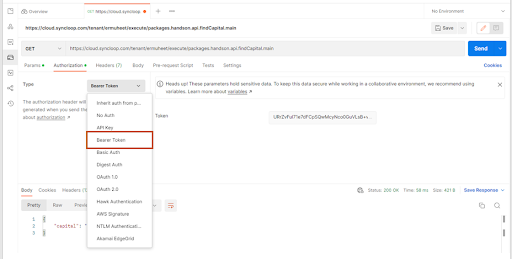
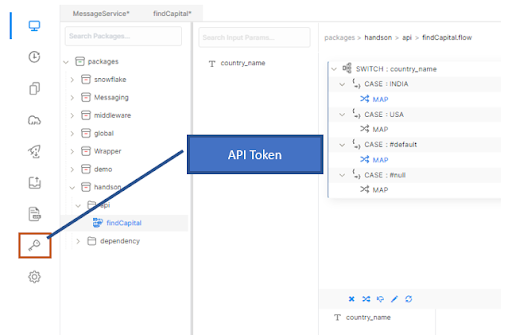
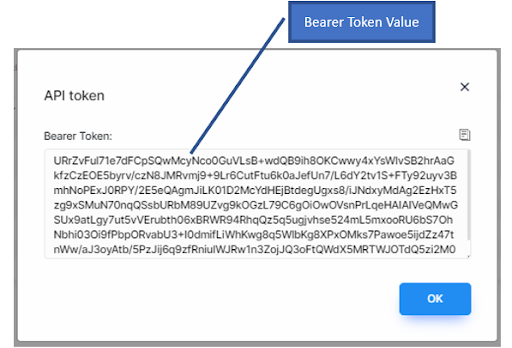
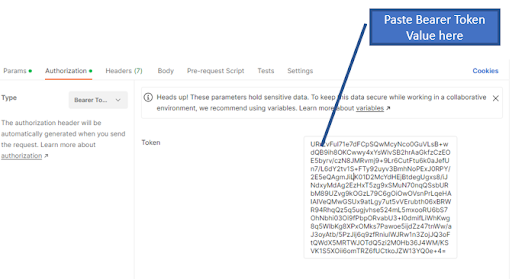
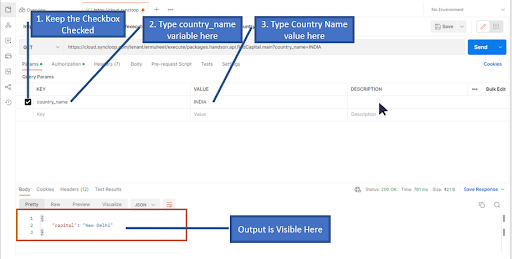
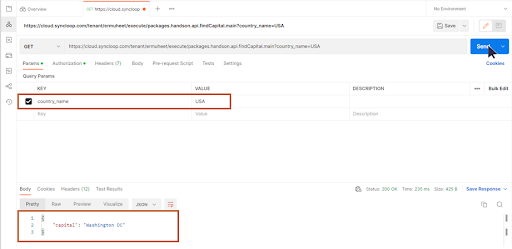
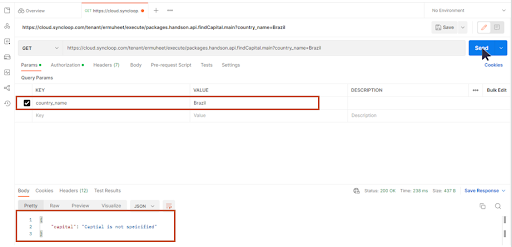
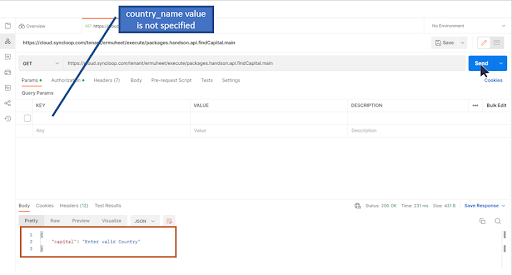
















 tool in the
Response
Section. It will not be used in further steps.
tool in the
Response
Section. It will not be used in further steps.
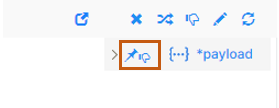
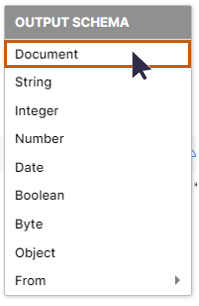
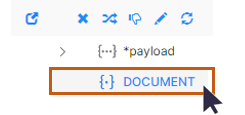

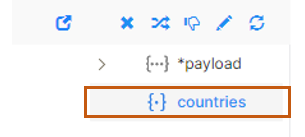

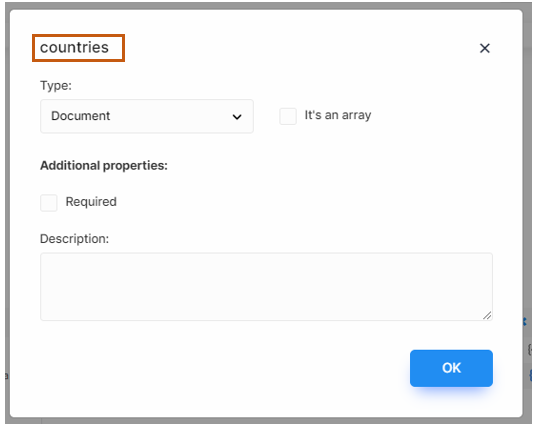
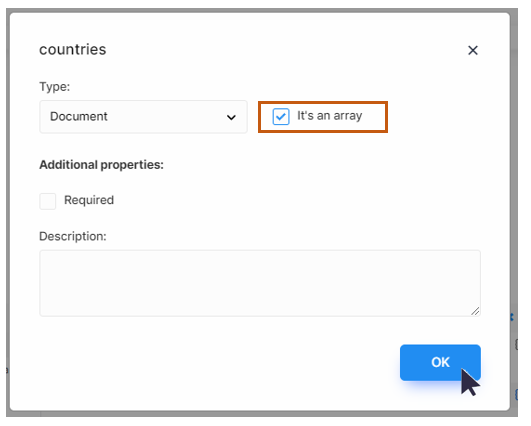
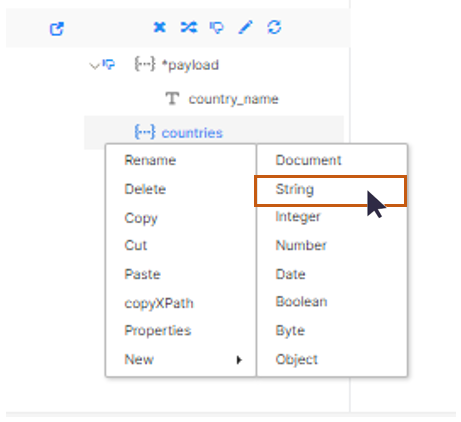

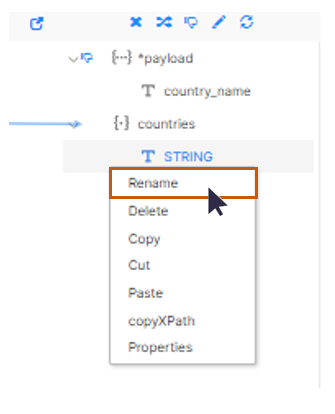

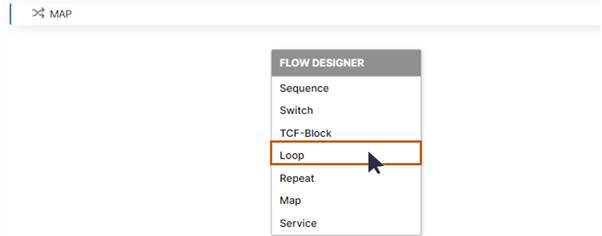

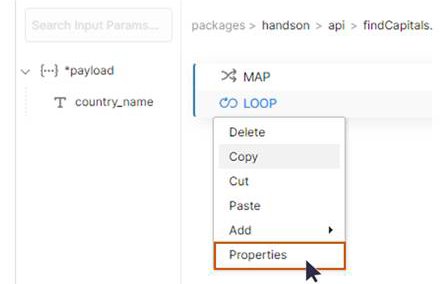
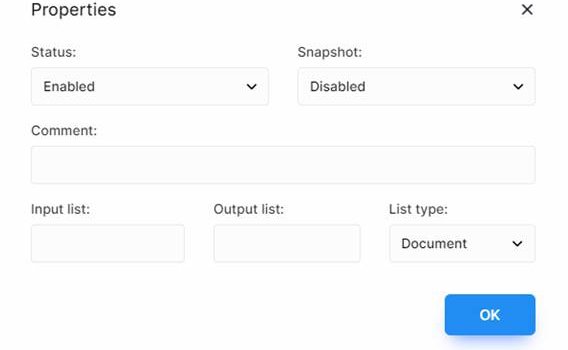
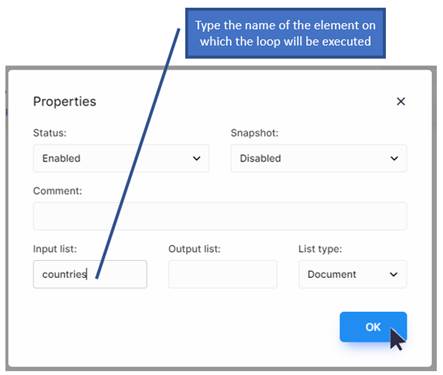
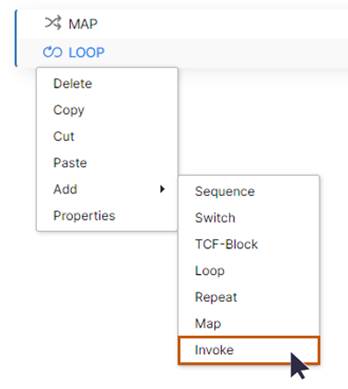
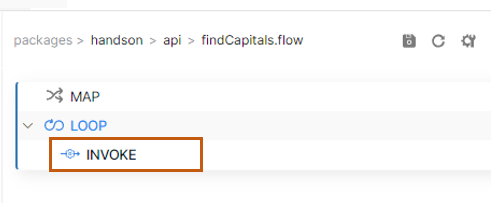
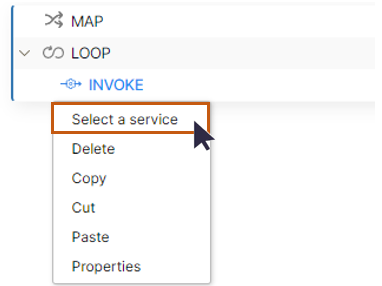
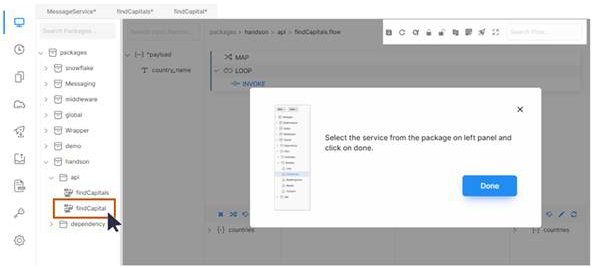

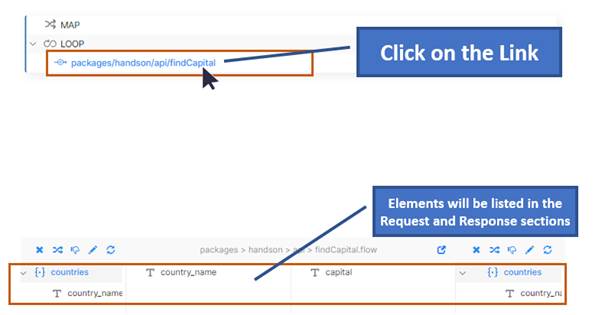

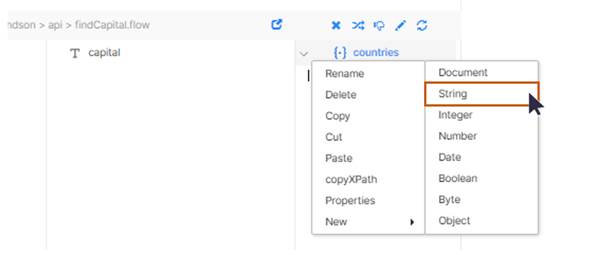

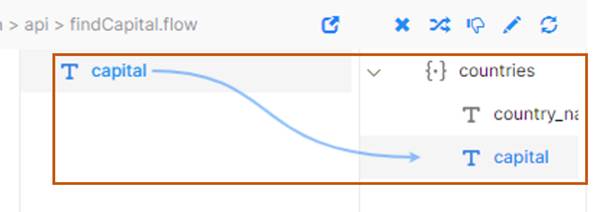

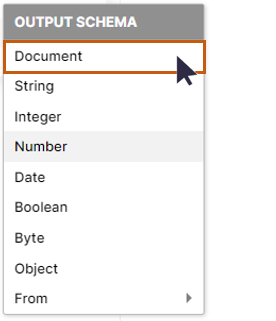
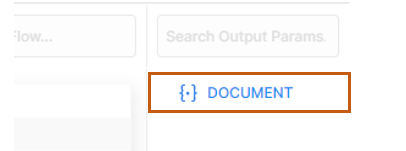
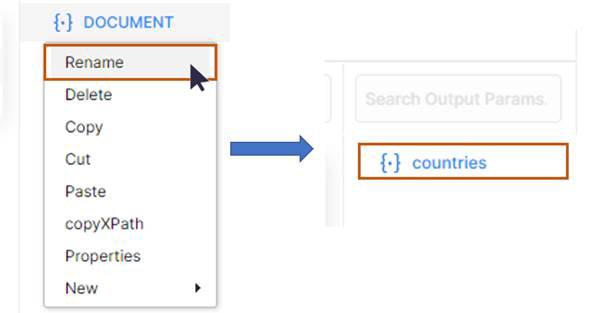
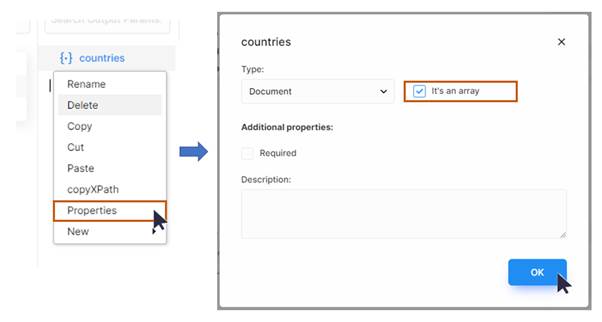

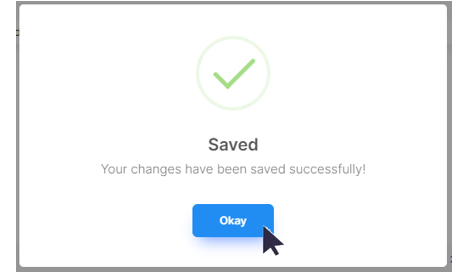
 from the tool
bar. Configuration dialog will be displayed.
from the tool
bar. Configuration dialog will be displayed. 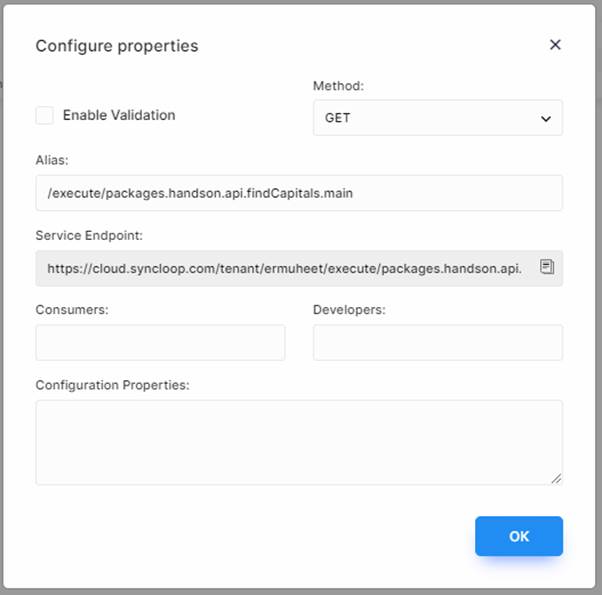
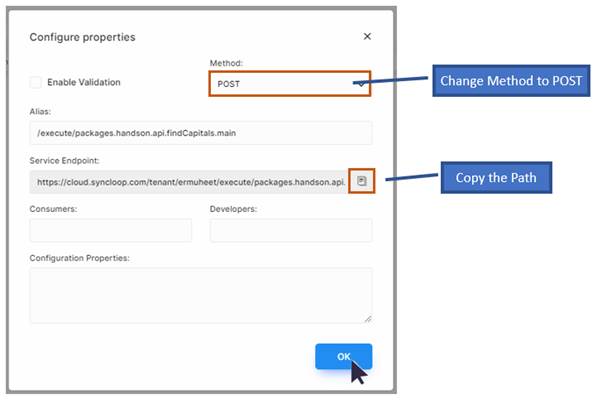


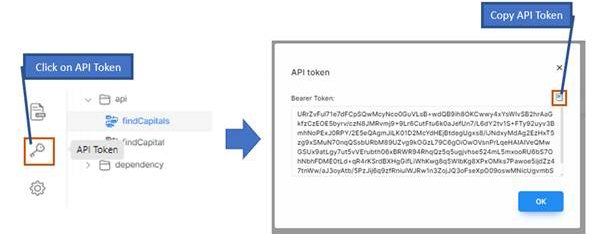
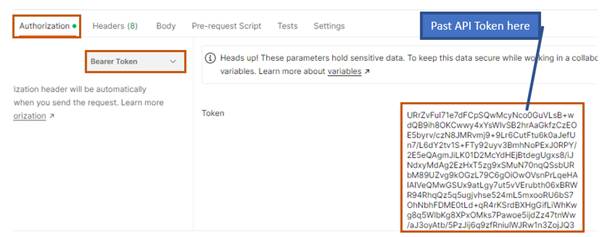

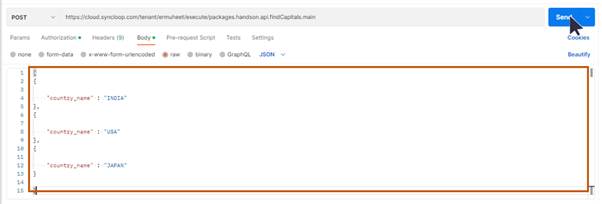
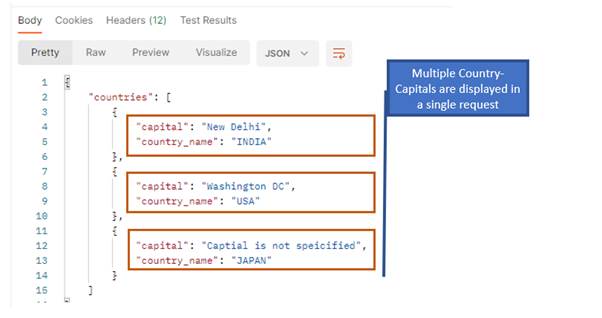
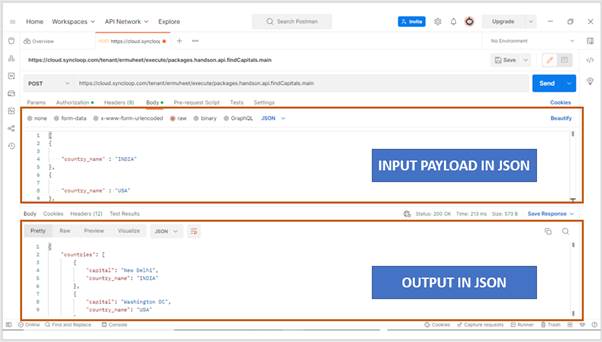
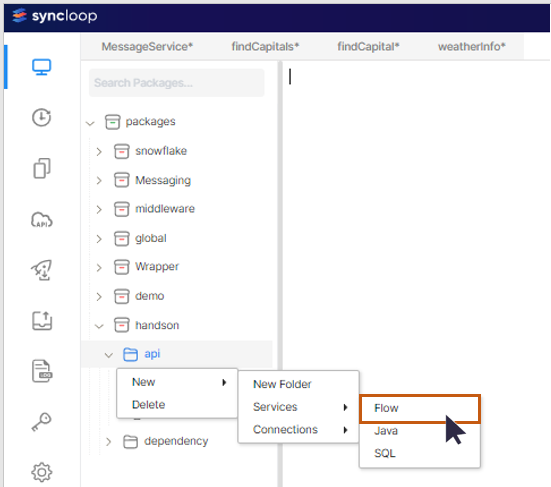
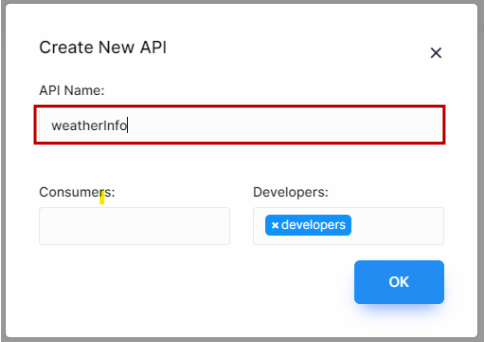
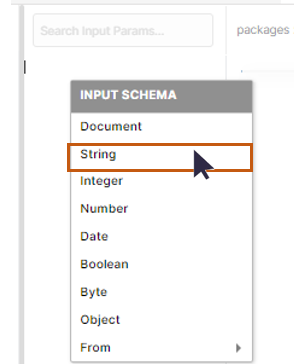

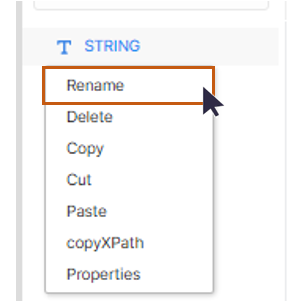

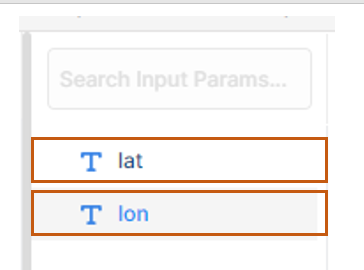
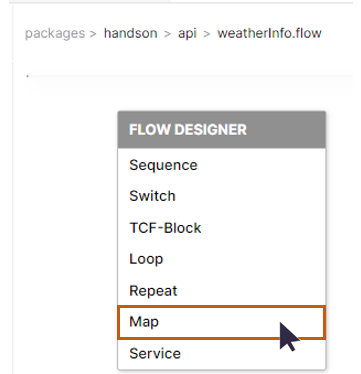
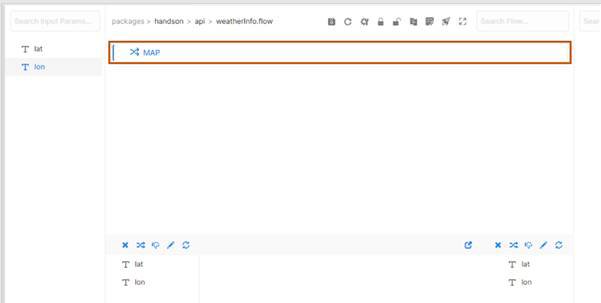
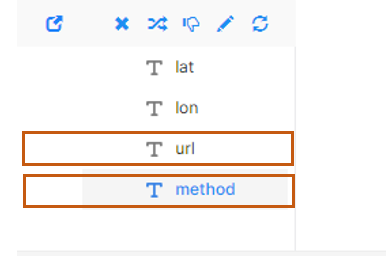

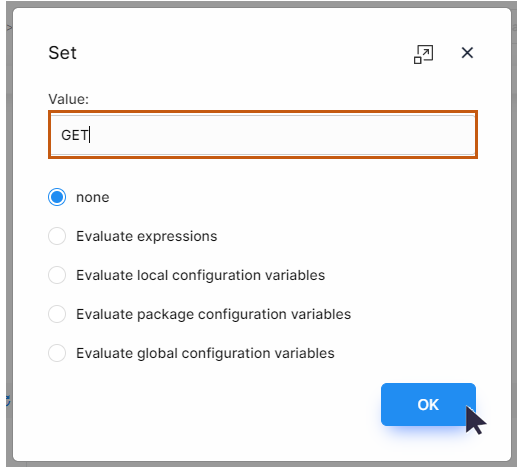
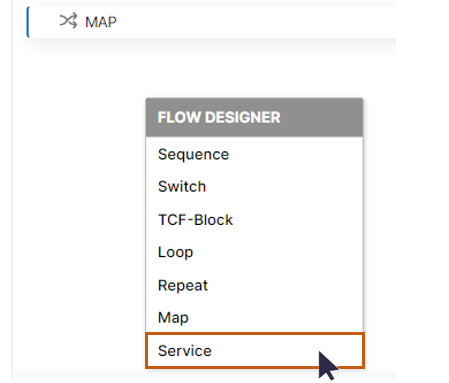

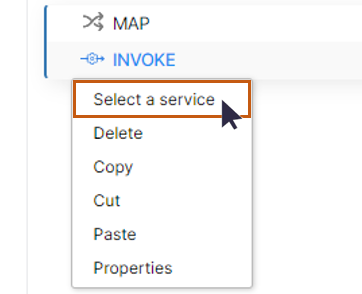
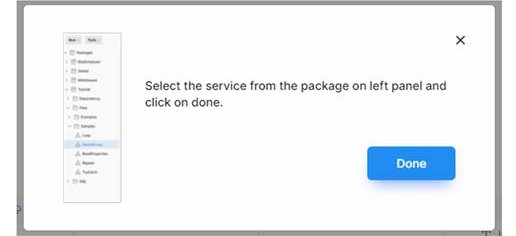
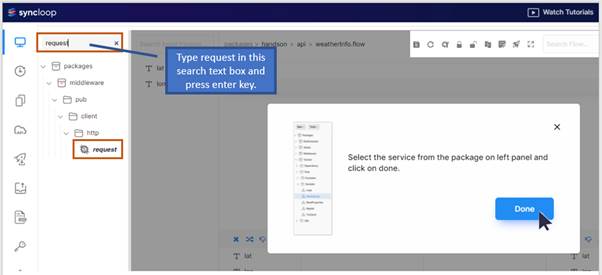
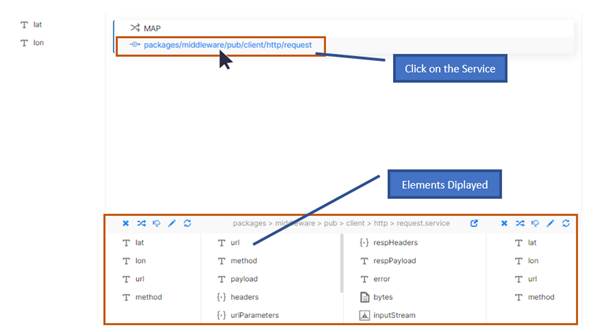



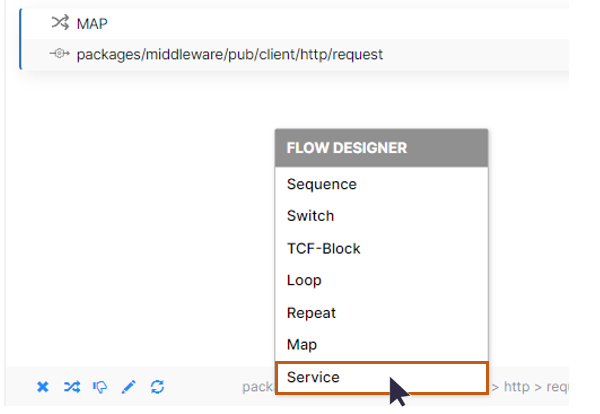


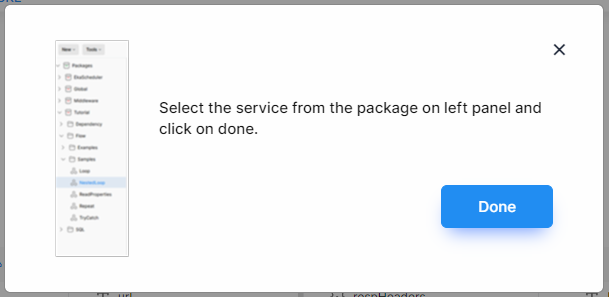
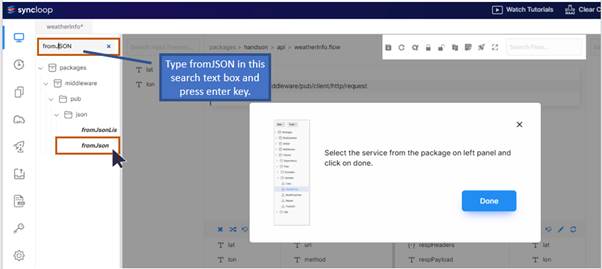
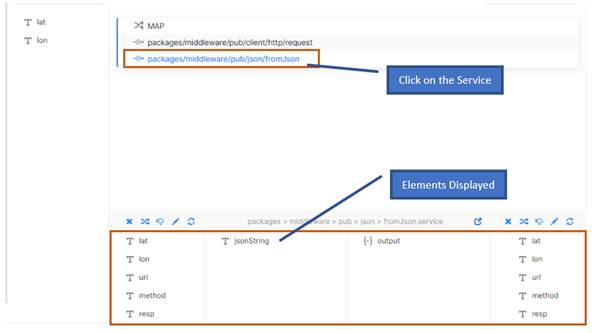

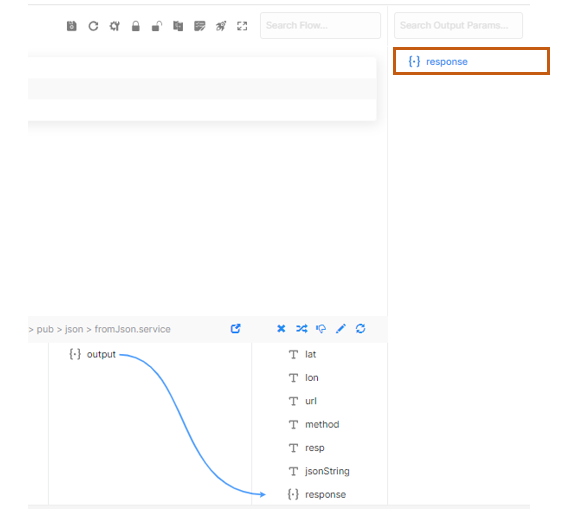

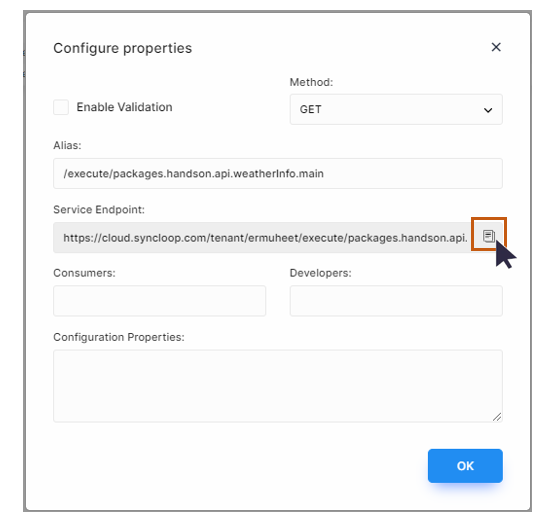



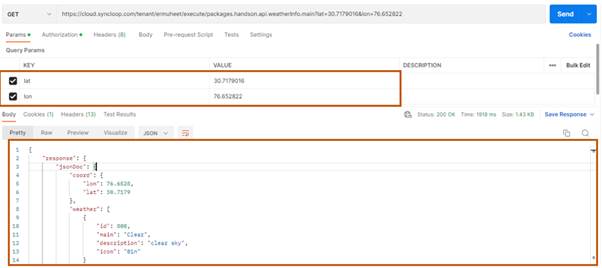
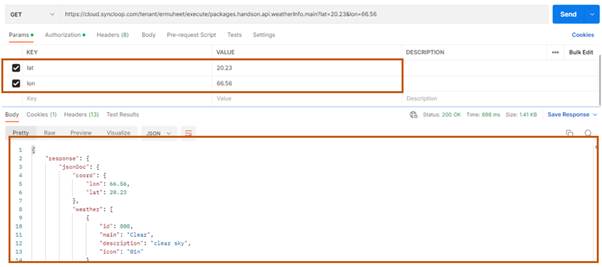

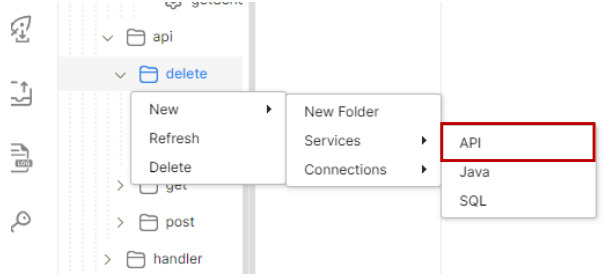
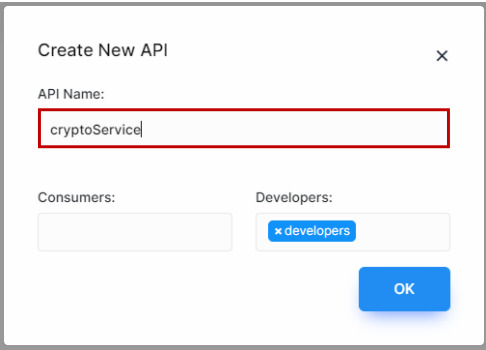
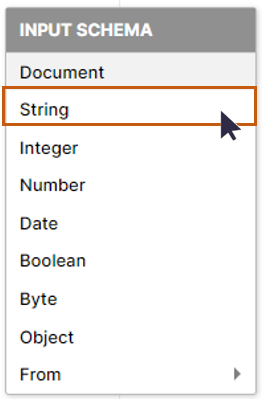

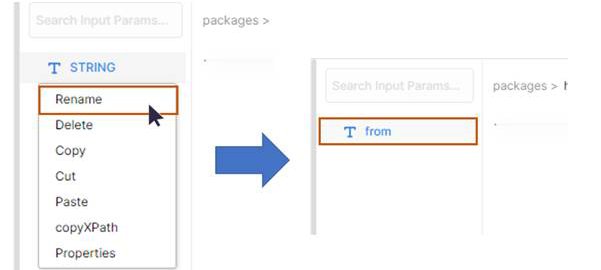
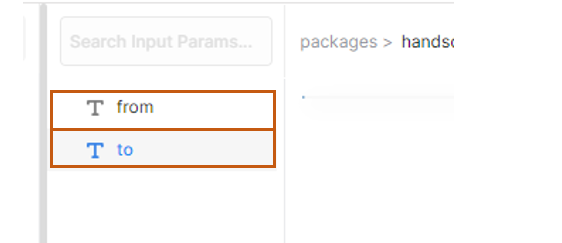
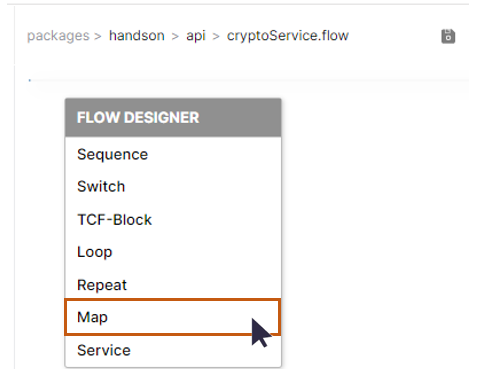

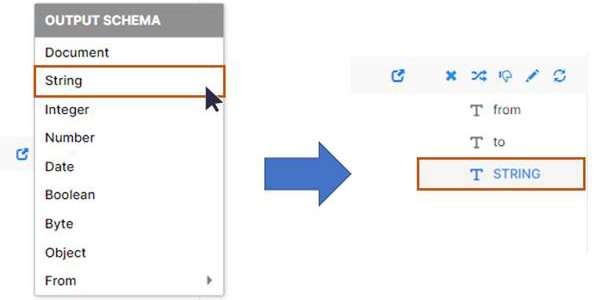
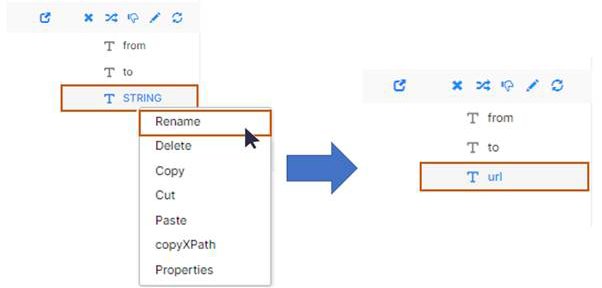
 tool from the section toolbar.
tool from the section toolbar. 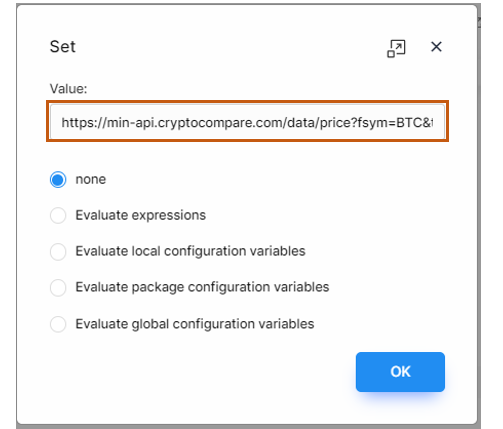
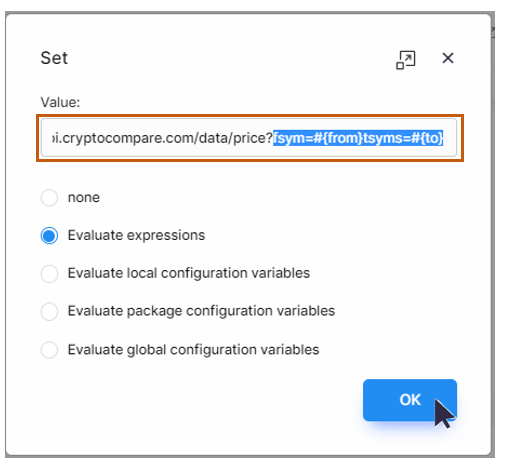
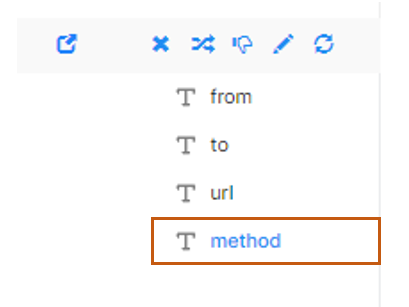

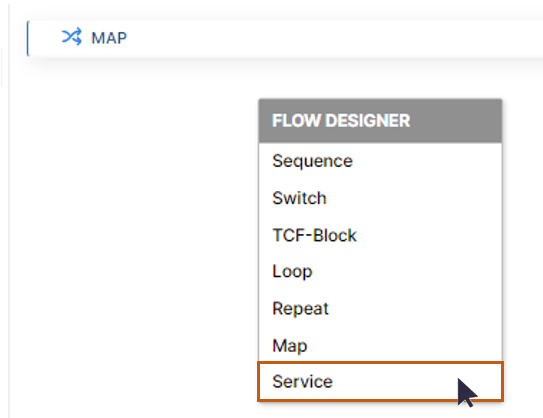

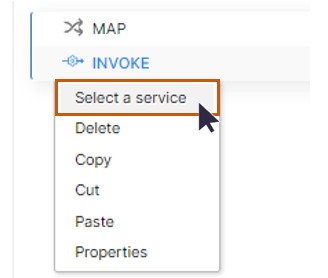
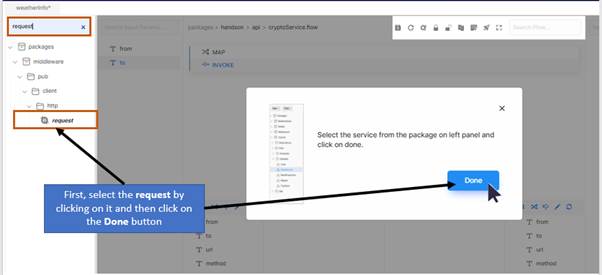

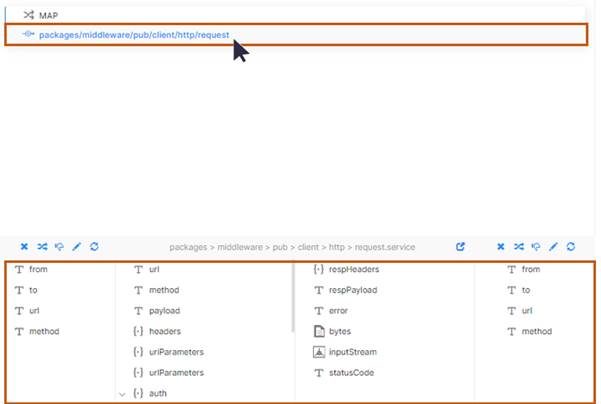

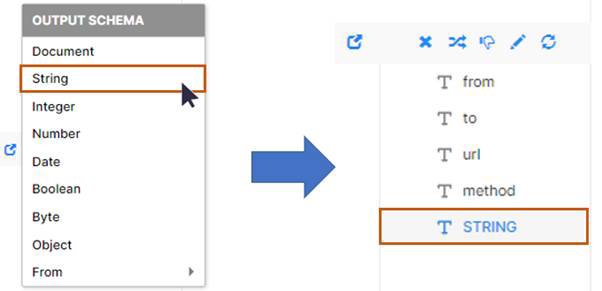
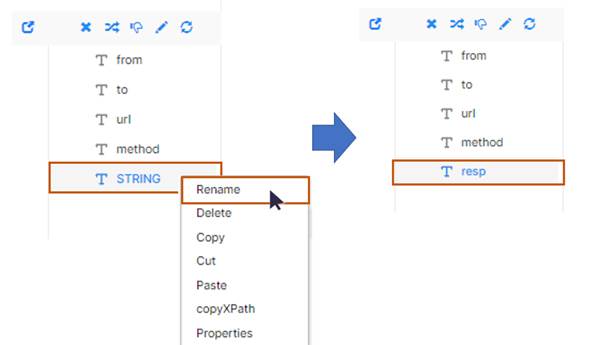


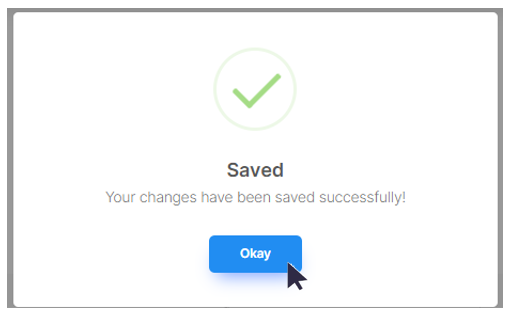
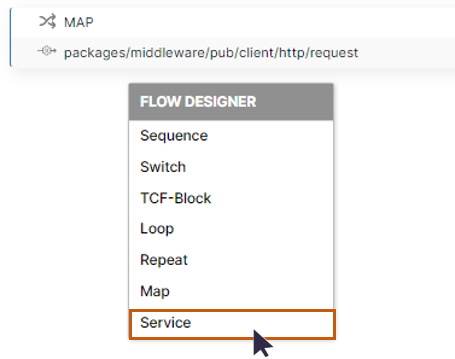

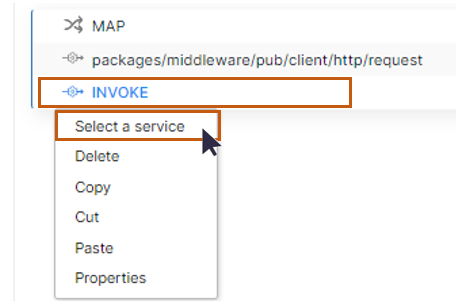
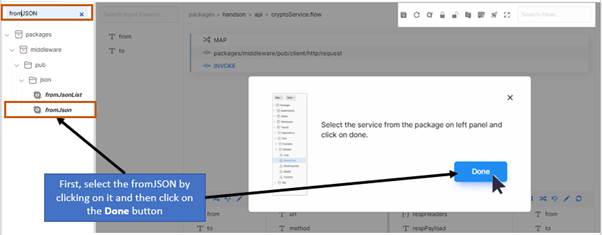

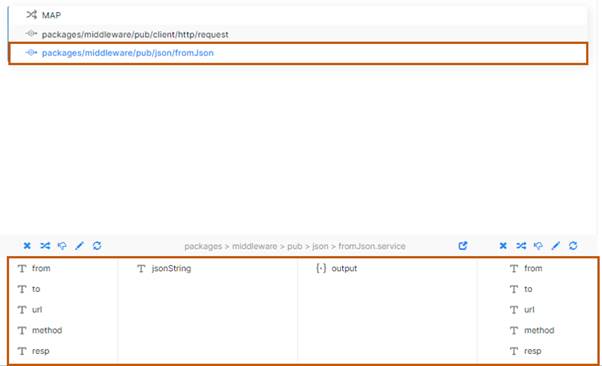

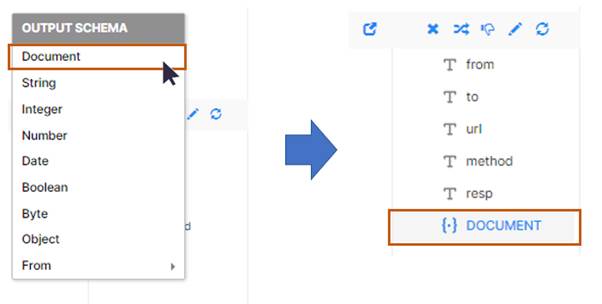
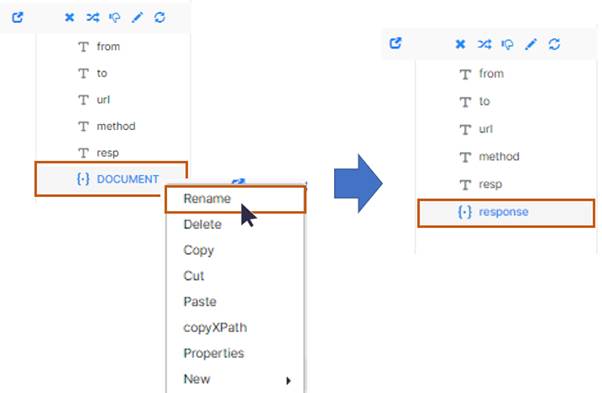

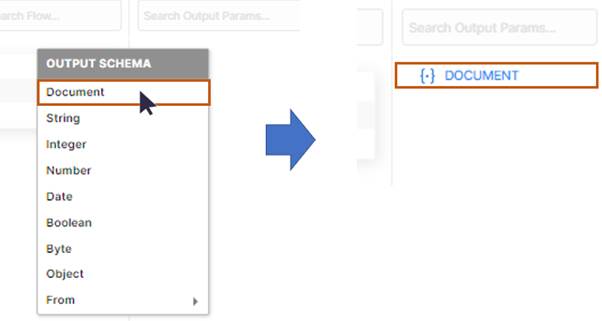
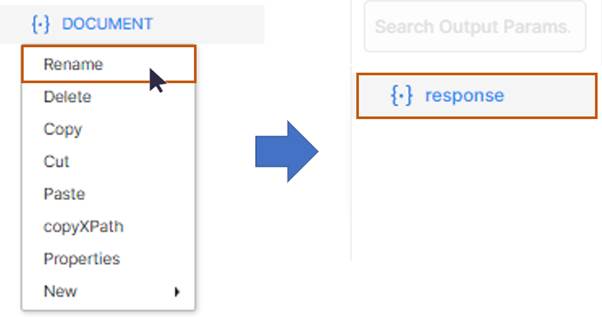

 copy tool. While you copy the service
endpoint a copied
message will be displayed on the tool.
copy tool. While you copy the service
endpoint a copied
message will be displayed on the tool.